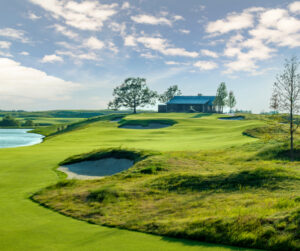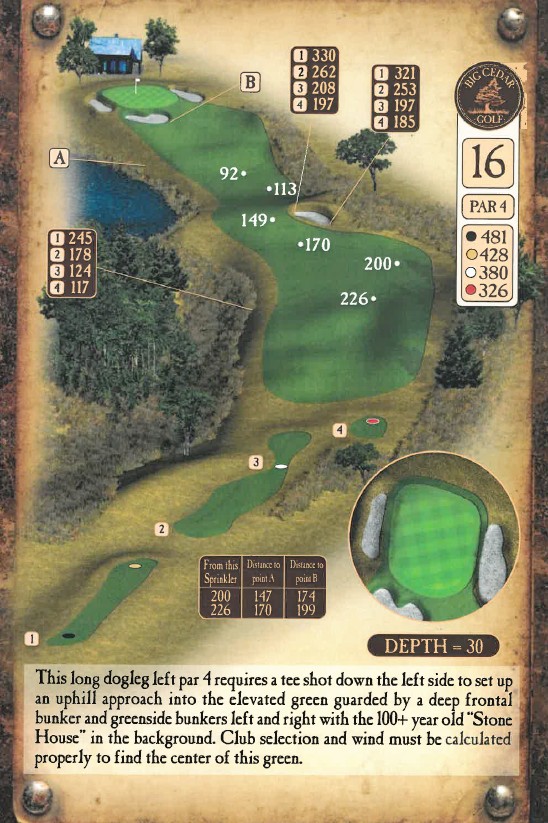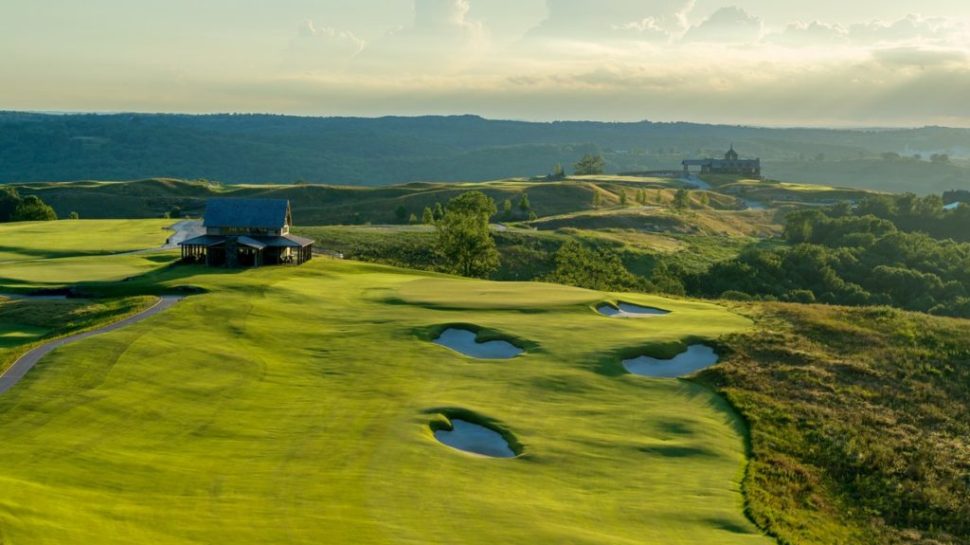
The twosome of Ben Crenshaw and Bill Coore have created an astounding array of dazzling designs — elevating “art” in architecture and proactively knowing when to step into the shadows in allowing the land to speak for itself. Like archeologists searching for rare artifacts the C&C approach is never about heavy handed disruption — just gentle caresses bringing to life a magnificent merger between Mother Nature and golf.
Just examine a few of their efforts — Sand Hills, Friar’s Head, Cabot Cliffs, Bandon Trails, Lost Farm at Barnbougle, Kapalua / Plantation, Streamsong / Red, Sand Valley, Old Sandwich. Unparalleled triumphs. Many architects would love to have just one of those efforts in their portfolios. On a personal level, my standing includes visits to 21 of their 18-hole original designs.
There’s just something about fall in the Ozarks. pic.twitter.com/PRB75vgARF
— Big Cedar Lodge (@BigCedarLodge) November 16, 2019
The C&C game plan is quite specific and ever clear: work for someone sharing their vision and showcase a property where holes work within the canvass — never outside it. Given the aforementioned prerequisites the talented duo have politely but clearly said “no” many more times than saying “yes” to prospective owners and the respective sites they own.
Given this resolute process C&C are extremely successful — never stretching themselves beyond a work load they are comfortable handling. This is, without question, not fast food golf course production. With such a sterling track record, anytime this dynamic duo comes forward with a “new” design the anticipation level, quite rightly, is clearly off the charts.
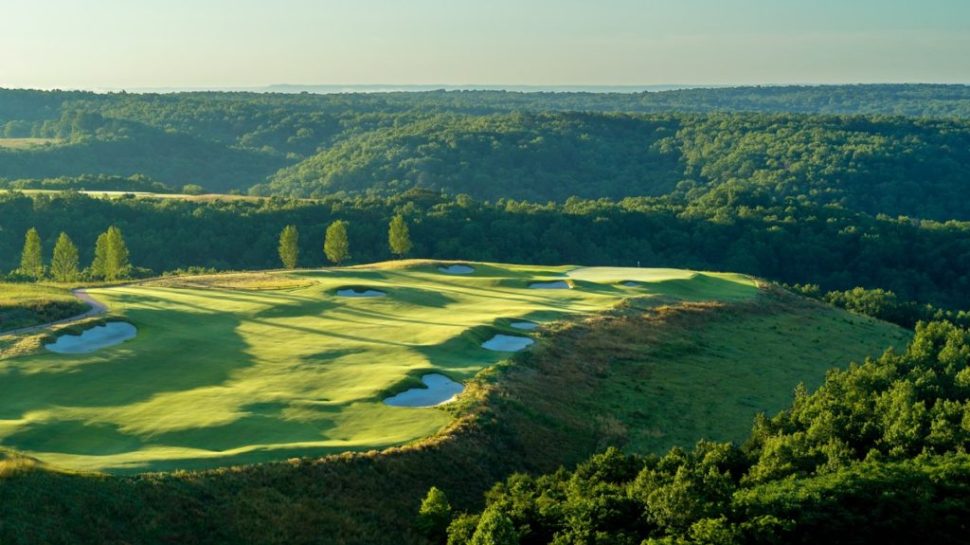
Credit Big Cedar Lodge owner / operator Johnny Morris in securing the involvement of C&C. Morris has spearheaded an incredible transformation of Big Cedar Lodge as a long time proponent of the great American outdoors. The majestic nature of the property, in concert with his passion for conservation, clearly is resonating with visitors and certainly served to attract C&C . Morris wisely provided C&C with a carte blanche situation.
Big Cedar Lodge is moving rapidly — searching to attain national prominence equal to any of the key American resorts. To do that, the golf side of the equation had to rise beyond what was already present. The recent opening of Ozarks National and the planned opening of Payne’s Valley, the new Tiger Woods design coming in 2020, is clearly signalling a “go” effort when so much of the American golf market is retreating given the sputtering pipeline of players and the over supply of courses.
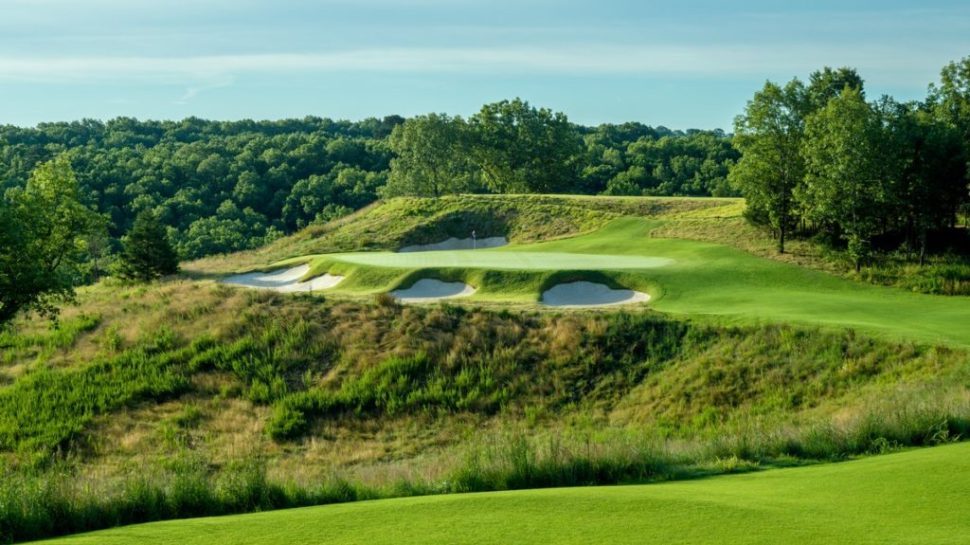
The underlying strength of C&C is not overplaying their hand. The tandem are ably assisted by arguably the finest of shapers — crafting an end product where the tell tale signs of human fingerprints are rarely easily discerned.
Ozarks National is located on a eye-catching ridge line providing a panoramic view of the immediate Ozarks region. There’s no competing clutter — just an unfiltered connection — golf and countryside. The property is also relatively devoid of trees so varying wind patterns are a daily matter for golfers to negotiate.
But, the critical question is does Ozarks National break new ground — either rivaling or exceeding what C&C have already accomplished? The answer is no.
Ozarks National starts off rather slowly — a par-5, par-3 and par-4 combination. However, the trio of holes is merely adequate to the task at-hand and given the stature of C&C hardly worth anything more than footnote of attention.

Things do ramp up with the solid uphill par-4 4th. The tee shot is tested and the approach even more so. There’s also a devilish rise of land — almost a knob — just before one gets to the putting green. Those intent on bouncing balls onto the green had best be aware of the various twists and turns this ground condition can cause.
The short dog-leg right uphill par-4 5th is a fun hole that tests patience over sheer brawn. You start from an elevated tee and as the hole turns right you have to decide how much of the corner is worth cutting off. For those bailing too far left you then face a singular tree that engulfs that side and will require an extremely lofted shot to escape. The two-tiered green is also done well — mandating a crisply played iron shot to set-up a good look at birdie.
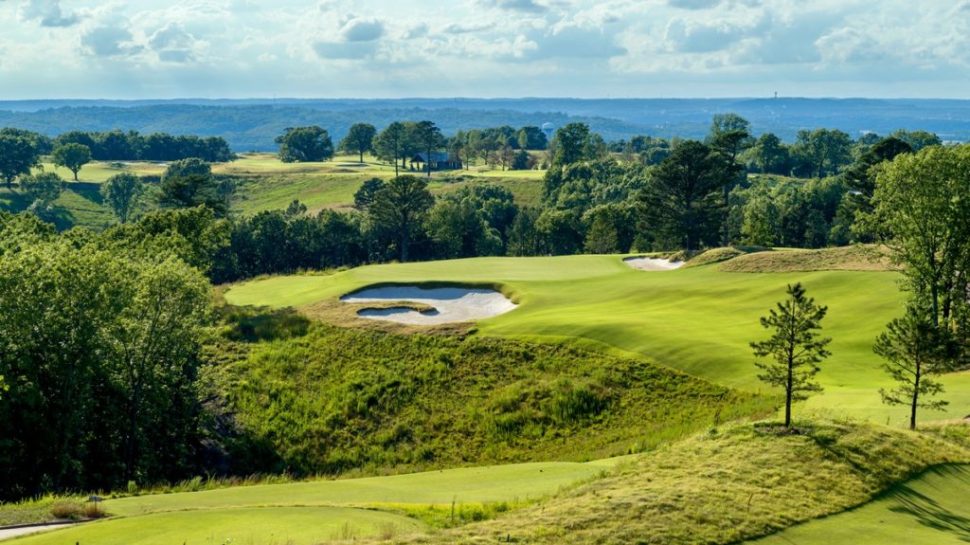
The 6th and 7th holes are a par-3 and par-5 respectively. The former presents a head-on shot to a long green ably protected by flanking bunkers. The 7th is a disappointment because there’s little in the risk side but much on the reward side. The fairway is overly generous and the left side fairway bunker is merely a cosmetic addition as strong players can fire over it and gain the benefit of the downslope and thereby having little more than a mid-iron into the green.
The par-3 8th changes the dynamic with an approach over a steep native area to a diagonal green — the more left the pin is placed the more precise the execution must be. The finishing hole on the outward side is a first rate three-shot par-5. From the back teeing area you can’t see much beyond the massive left fairway bunker which serves as your aiming point. Be sure to give it a wide berth as there’s more fairway to the right side. The key rests with the player in deciding how close to the left fairway bunker do you wish to play. Those able to carry it will gain yards and have a far better angle on the second shot. The terrain adds plenty to the hole — turning left continually and ably protected by a series of bunkers that forms the boundary with the adjacent native area.
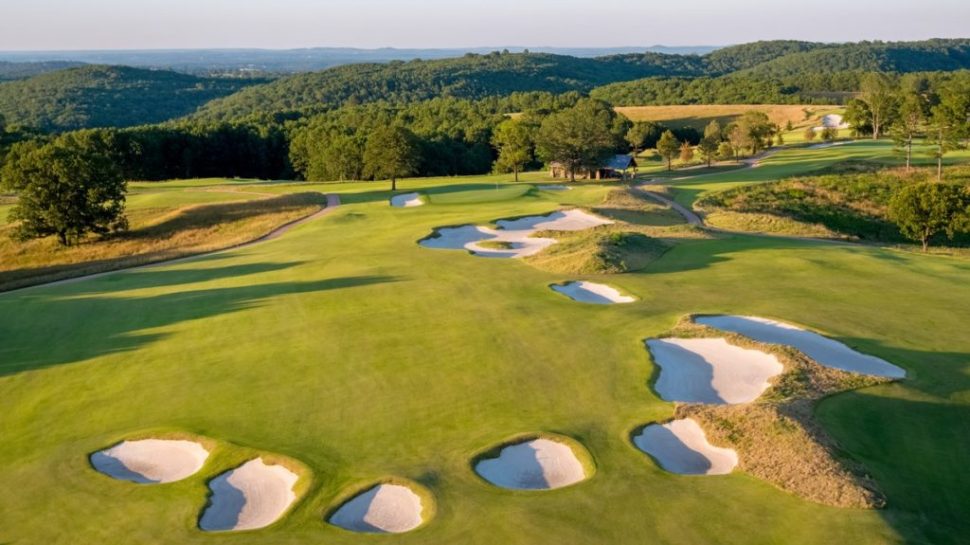
The inward side has the better overall consistency of holes although there are at least two that simply serve as filler. The 10th is a stout par-4 which plays slightly uphill. There’s more room to the left but one has to be especially careful in going too far in that direction. The right side is the preferred spot but another bunker hugs that side closely. The elevated green is best approached from the right.
The 11th is a quality risk/reward par-5. An aggressive tee shot played down the right center will provide an opportunity to go for the elevated green. The putting surface is also well crafted — missing to the left will spell certain doom as the closely mown area will simply propel your ball down a considerable slope.
One of the real virtues of the course comes in having an outstanding long par-3 which comes at the 12th. Playing slightly downhill the 249-yard hole permits shots to bounce onto the green with a right side shoulder area encouraging balls to find their way. Stronger players can fly the ball onto the green but those who opt for this route had best be keenly aware the green runs away from the tee. There’s also a soft spine that separates the right and left sides of the green. When the pin is cut to the near left side — a frontal bunker provides ample defense. Long par-3 holes are often bemoaned by many players but they clearly have a role and when the design is done in such a thorough manner they can truly excel as demonstrated by the 12th.
The 13th and 14th holes are two quality long par-4’s. The former plays from an elevated tee as you hit over a deep ravine with the hole turning left. Those playing as close as possible to the left side receive a more favorable angle and shorter distance to the elevated green. The 14th lists at 450 yards but there’s a more distance tee called, “Ben’s Torture Tee,” and this provides the hole with at least 40 additional yards. The hole plays to blind uphill landing area. Once you ascend the hill you see the green in the distance — elevated and quick to repel all but the most soundly played of approach shots. The putting surface is quite narrow in front and then widens out somewhat in the rear. The key is being ever accurate with your 2nd shot. The slightest push or pull will mean some serious recovery time to escape with a par. One of the finest holes at Ozarks National.
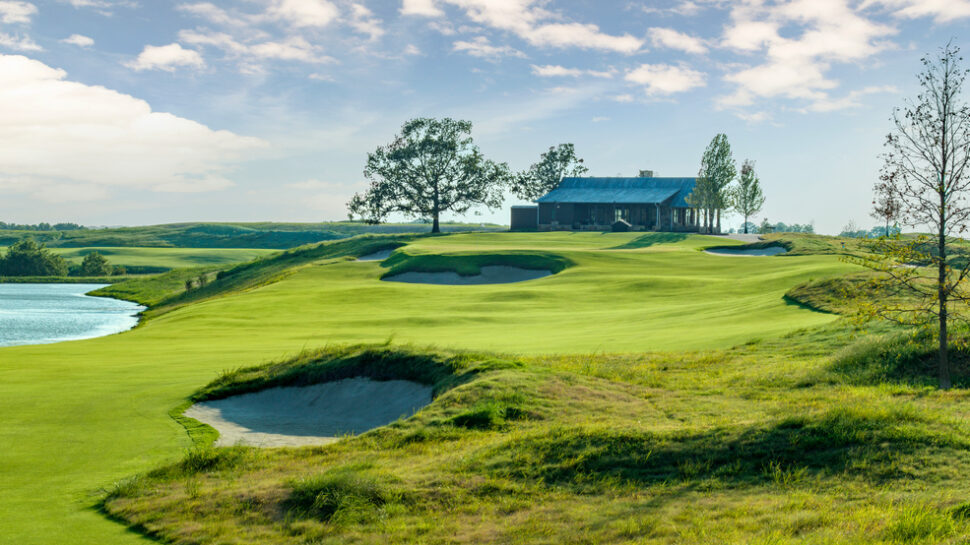
The 15th that follows is a letdown. After a run of several really good holes, this par-4 is simply manufactured with a sequence of cross bunkers strung along the drive zone. The land is acceptable and the shot requirements simply pedestrian.
Things do change noticeably at the long par-4 16th. The back tee is located immediately next to the refreshment house. Native area to the left must be avoided and when played from the tips one can aid directly at the distance right side fairway bunker. What makes the hole far more interesting is when the hole is played from the gold tees because at that point there’s a real possibility for strong players to have to negotiate a narrowing landing area on the left and the aforementioned bunker. The green is considerably higher than the fairway and likely requires an additional 1-2 clubs to get to the target. The green tilts slightly from right-to-left and just behind the green is a playful addition with a doghouse named for “Willy.”
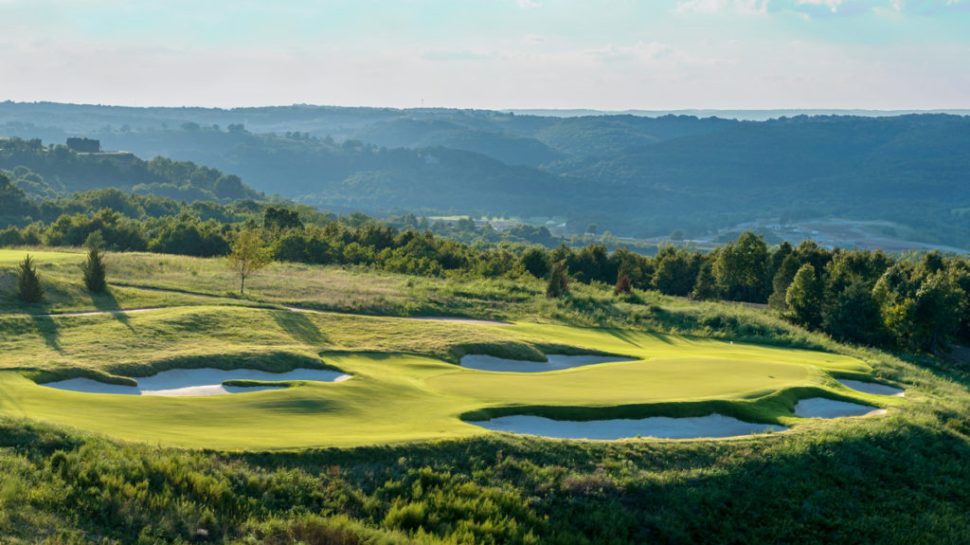
The penultimate hole is a short par-3 — played from an elevated tee as a dropshot hole. C&C have often excelled with short par-3’s — the 5th at Bandon Trails and the 17th at Clear Creek come quickly to mind. That’s not the case here. The hole generally plays downwind and while the scenery is clearly a plus there are no serious details with the green to place a high premium on the approach.
The finish hole does quite well — a dog-leg right long par-4 descending slightly from the tee before rising noticeably to one of the better greens at Ozarks National.
All in all, Ozarks National is a good layout. It’s just that C&C have created such a lofty position that merely “good” is not good enough. Ozarks National’s main strength is the site itself. The sweeping grandeur is ever present but there are glaring omissions where the philosophy of “less is more” simply produces an unintended consequence of “less is less.”
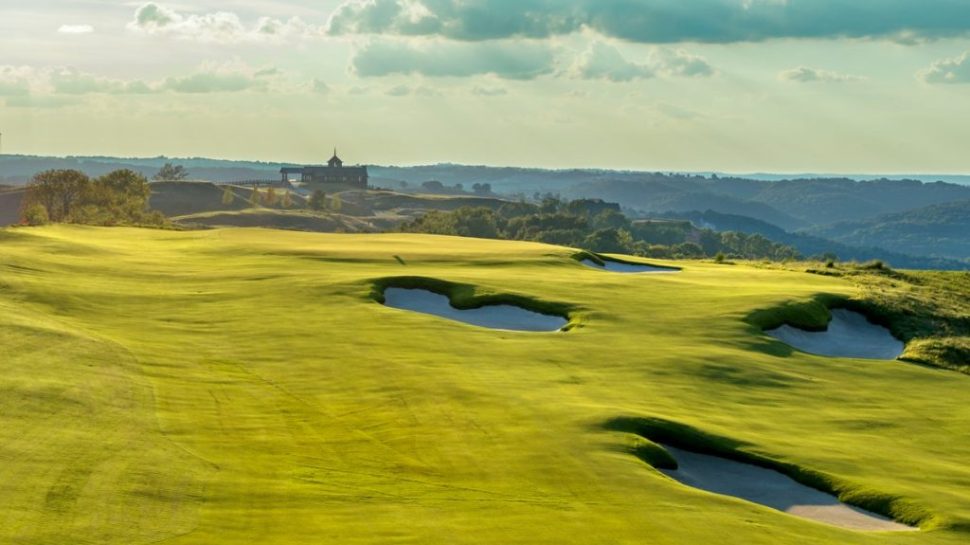
What will be most interesting as we head into 2020 will be the opening of Payne’s Valley, the new Tiger Woods course on property and what C&C do at Sheep Ranch — the newest addition at Bandon Dunes. These two new layouts will clearly impact the standing of Ozarks National. Unabashed fans of C&C will likely relish all that is present no matter what.
However, under the deep dive of true comparisons with the tour de force layouts created elsewhere by golf’s most talented design twosome, Ozarks National delivers in baseball terms a solid double — just not the home run it might otherwise have been.
***
For more info go to:
Photo credits: Evan Schiller
Schematic rendering: Courtesy Ozarks National.
